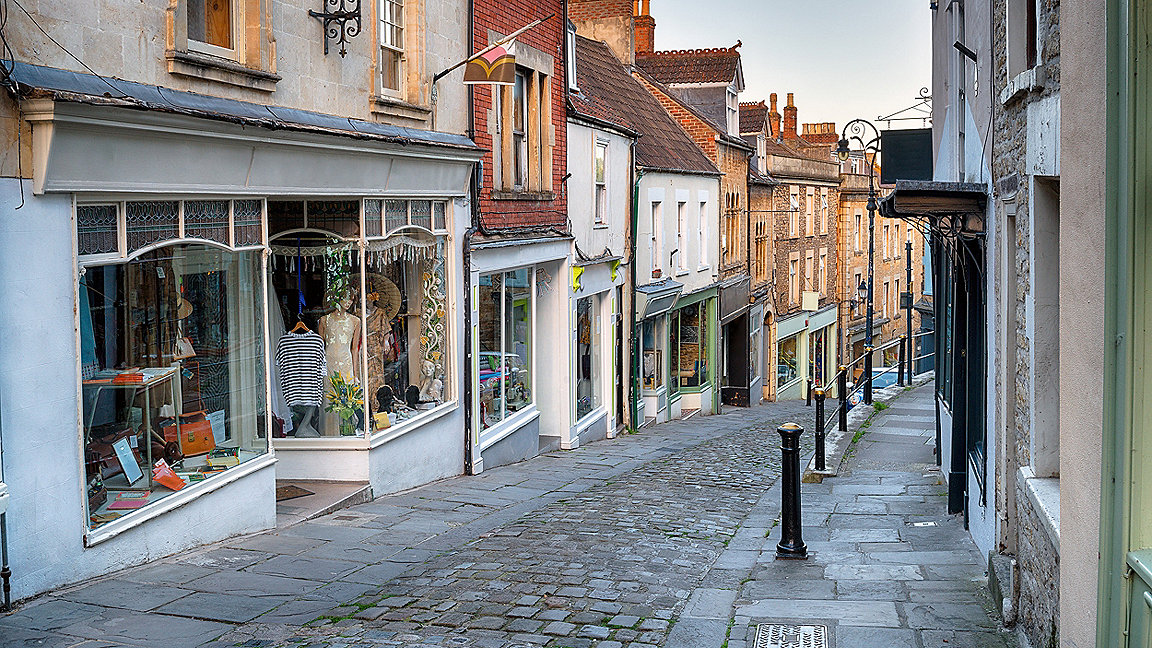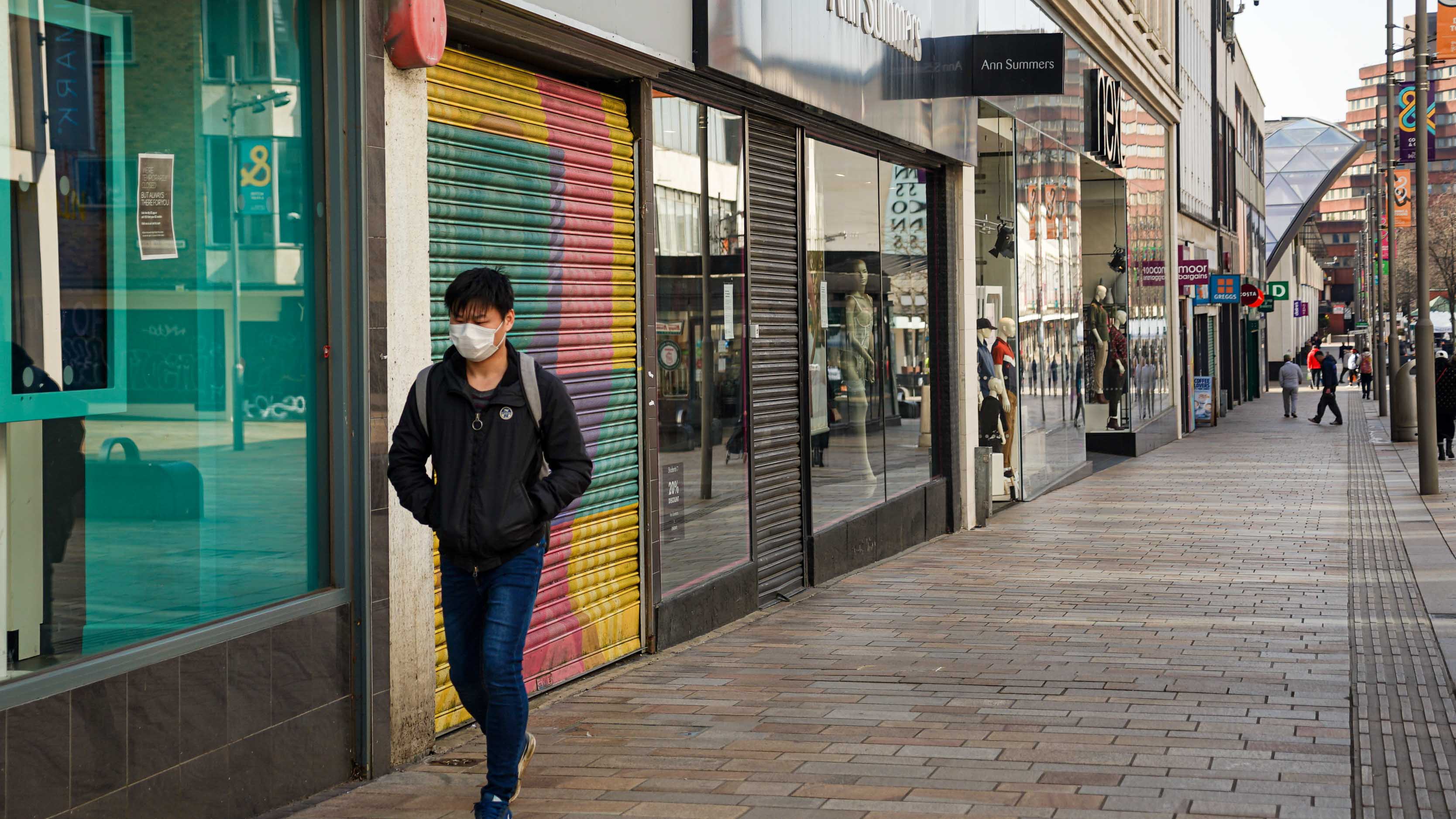
During lockdown, high streets were shut for the first time in British history, bar essential retail – a situation that led to a peak in online shopping at 37.8% of retail sales in 2021, according to the Office for National Statistics. However, the decline of the high street has been a long time in the making.
Even before shopping went online it went out of town, to retail parks and malls. This has caused a vicious cycle of degeneration: less investment, lower footfall and increased vacancy.
Yet despite the challenges facing our urban centres, they continue to play a fundamental role in our lives. Accordingly, local centres have become a policy priority, and people's satisfaction with their town centre is one of the UK government's 12 levelling-up missions.
However, turning failing towns around takes more than central government support. It needs local leadership, vision and partnership working. This much was recognised by Sir John Timpson when he reviewed England's high streets for the government in 2018.
People passionate about where they live – be they businesses, landlords, community representatives, local authority officers or councillors – can and do make a difference to these places, he maintained. Sir John recommended that a High Streets Task Force be set up to support such people.
The taskforce was commissioned by competitive tender, and in 2019 a consortium led by the Institute of Place Management at Manchester Metropolitan University was invited to run it until completion in June 2024.
Offering support and gathering data
The taskforce has four main functions:
- providing expert support to local authorities with specific high streets that are in need
- offering training, guidance and advice to anyone who wants to improve their high street, in the form of an online resource library, webinars and e-learning
- coordinating a range of stakeholders and other support bodies nationally in the interests of local high streets
- collating data and intelligence to understand the challenges facing high streets and their performance.
RICS was heavily involved in the design of the expert support packages for local authorities, working on these with the Institute of Place Management, the Royal Town Planning Institute, the Landscape Institute and the Design Council. The institution is also a member of the taskforce's professional, research and data group, providing insight on high-street property and rentals.
The taskforce is now more than halfway through its programme of direct support to 150 English high streets and satisfaction is high, with an average of 89% of local authorities that use the service satisfied or very satisfied with it.
Evolution beyond retail wrongfoots councils
The taskforce has already identified the highly local nature of the challenges in improving UK high streets. While there are large-scale issues affecting all locations – such as the economy, consumer confidence and business rates – some are better able to mobilise their stakeholders and adapt to threats and shocks.
Central to this focus on the local response is a new conceptualisation of high-street viability, which includes a wider set of benefits for the catchment community, such as environmental, social and cultural improvements.
Traditional definitions and measures of high-street viability have concentrated on economic gains for property owners. However, this is a very limited view: a viable high street of the future should be liveable, sustainable and resilient, offering green space, clean air, employment opportunities and social space, for example.
Often, the support that the taskforce gives reflects a renaissance on many high streets as they evolve into multipurpose community hubs.
According to its analysis of town function, based on usage patterns in more than 200 UK towns and cities, less than 10% are primary locations for shopping. In these 10% of traditional shopping locations it is, to some degree, business as usual and the local authority is unlikely to need the taskforce's help.
However, it is not just retail or major brands that attract people to the vast majority of high streets anymore. Culture, convenience, employment, heritage, leisure, sport, education and health are the new anchors for many.
This shift often leaves local authorities ill equipped to support the evolution of high streets in their area. If the contemporary high street is multifunctional, a more diverse range of stakeholders is needed to support its evolution.
Taskforce prescribes stakeholder engagement
Following a diagnostic visit, town tour, a meeting with the local authority and key stakeholders, and a review of secondary data – such as footfall, vacancy and local media coverage – the taskforce is in a position to issue a prescription.
Not surprisingly, 38% of prescriptions are for governance and partnership working, to bring in the people and organisations who understand what needs to change and can effect that change.
A further 35% are for immediate reinvention. For too long, the aspirations of high streets have been tied up in long-term masterplans and capital schemes, whereas the fortunes of a location can actually change very quickly through markets, pop-up events, festivals, temporary uses, storefront spruce-ups, safety improvements and so on.
One of the most popular taskforce prescriptions is for a teenage market licence, which brings young people – a traditionally overlooked stakeholder group – into the town centre, as producers and consumers alike.
Meanwhile, 15% of prescriptions focus on rebranding and changing perceptions, and 12% on repositioning, or collecting further data to obtain a better understanding of challenges.
Of course, these are difficult times for high streets. But the work of the taskforce shows that local leaders – the people who are passionate about places – can make a difference.
It has already recommended that the government does more to nurture and support high streets and create more multi-stakeholder place partnerships, as these are key to transformation.
Case studies from some of the local authorities the taskforce has already worked with illustrate this. For example, Ellesmere Port has convened a new partnership that is bringing public services, housing and an enhanced cultural offering into the town.
The partnership in Newquay meanwhile has attracted more than £50m of government investment to better connect the town by rail and through active travel routes.
But we believe the impact of the taskforce will not just be felt in the places we have supported, as the government has recently announced a £2.5m pilot to encourage more such multi-stakeholder partnerships in England.
'For too long, the aspirations of high streets have been tied up in long-term masterplans and capital schemes'
Professor Cathy Parker is the research lead for the High Streets Task Force
Contact Cathy: Email
Related competencies include: Planning and development management, Property management
High street and commercial real estate
Creating vibrant, agile and sustainable high streets is a key priority for RICS. Our UK Commercial Real Estate Impact Report highlights the social and economic value of commercial real estate; its role in regenerating our town centres and the important part it will play in tackling climate change.
With the UK government's Levelling Up and Regeneration Bill giving more funding and planning powers to communities, RICS is calling for, and supporting, measures that will revitalise, regenerate and repurpose high streets and commercial property.

